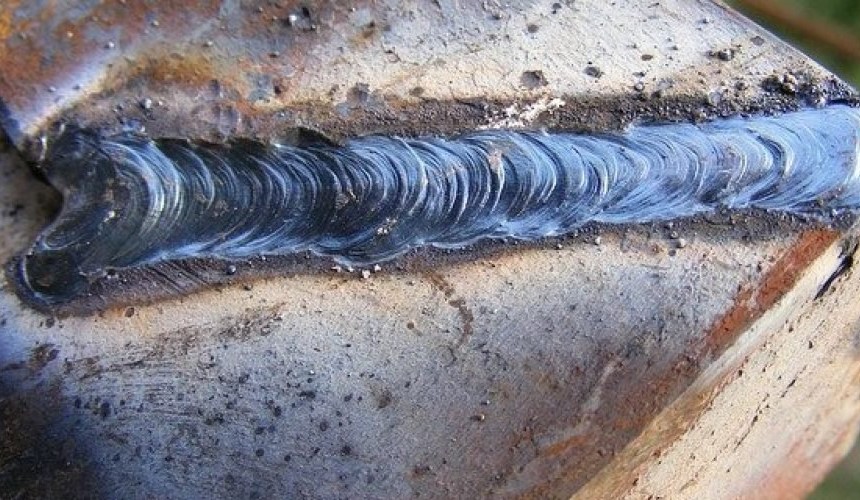Best Practices for Preventing Weld Undercut: Grasping the Basics
Best Practices for Preventing Weld Undercut: Grasping the Basics
Blog Article
Comprehending the Causes and Solutions for Undercut Welding in Steel Construction Processes
In the realm of metal manufacture processes, the incident of undercut welding positions a substantial obstacle that demands an extensive understanding of its reasons and sensible options. The detailed interaction of numerous aspects during welding operations can lead to this unwanted sensation, affecting the architectural honesty and overall quality of the bonded joints - Preventing weld undercut. By dissecting the root triggers of undercut welding and checking out effective remedial procedures, producers can elevate the requirement of their craftsmanship and make sure the production of remarkable metal parts
Usual Root Causes Of Undercut Welding
Often forgotten in metal fabrication, undercut welding occurs due to various variables that demand meticulous interest and experience to be efficiently minimized. In addition, inappropriate welding techniques, such as using the wrong welding angle or travel rate, can also add to damage development. The option of welding parameters, such as voltage, existing, and cord feed speed, plays a considerable function in the event of undercut welding.
Influence of Incorrect Welding Parameters
Imprecise welding parameters can substantially jeopardize the honesty and quality of welded joints in metal fabrication processes. The effect of incorrect welding criteria materializes in different ways, bring about architectural weaknesses and problems in the bonded components. One vital element influenced by inappropriate welding criteria is the penetration deepness of the weld. Not enough warm input due to low welding currents or excessively high travel rates can result in insufficient fusion between the base metals, bring about incomplete joint infiltration and weakened bonds. Conversely, too much warm input triggered by high welding currents or slow-moving travel speeds can cause too much and burn-through reinforcement, developing a brittle and unpredictable weld framework. Furthermore, inaccurate criteria such as inappropriate voltage setups or inaccurate electrode angles can contribute to erratic weld grain accounts, absence of fusion, and increased possibilities of defects like undercutting. Careful interest to welding criteria is critical to guarantee the manufacturing of premium welds with the preferred mechanical residential or commercial properties and architectural stability.
Result of Improper Torch Angle
Incorrect torch angle in welding procedures can substantially impact the top quality and integrity of the last weld joints in steel fabrication processes. The lantern angle plays a crucial duty in identifying the warmth input and circulation throughout welding. When the torch angle is incorrect, problems such as undercutting can emerge. Undercutting is a common welding flaw where a groove forms along the weld toe, weakening the joint and compromising its architectural stability.
A torch angle that is also high can cause inadequate infiltration, incomplete fusion, and increased spatter. On the other hand, a torch angle that is also superficial can cause excessive penetration, burn-through, and distortion of the base product. Preventing weld undercut. Appropriate lantern angle is crucial for guaranteeing regular weld high quality, strength, and appearance
To avoid undercutting and other problems triggered by improper torch angles, welders need to be trained to maintain the right torch angle throughout the welding process. Normal tracking and modification of torch angles throughout welding can aid attain audio welds with very little issues.
Function of Inadequate Welding Methods

Another element of inadequate welding methods is improper weld preparation. Inadequate cleansing of the base metals, inaccurate joint style, or not enough side preparation can all contribute to damage welding. Insufficient securing gas insurance coverage or using the incorrect kind of gas can result in incomplete combination and the development of undercut flaws.
To deal with the role of poor welding strategies in metal construction processes, it is necessary to provide detailed training for welders. Appropriate education on welding parameters, joint preparation, and protecting gas choice can help avoid undercut welding and make certain top notch welds in steel fabrication jobs.
Effective Solutions for Undercut Welding
Attending to undercut welding in metal construction requires applying effective services to boost weld quality and architectural honesty. Among the main remedies to combat undercut is to adjust welding criteria such as voltage, present, and take a trip rate to make certain correct heat input and fusion. By fine-tuning these setups, welders can prevent excessive melting of the base metal and filler product, decreasing the probability of undercut formation.
Furthermore, proper joint preparation is vital in preventing undercut. Making sure tidy base steel surfaces without pollutants and making use of the appropriate bevel angle can assist discover this info here advertise much better weld penetration and reduce the threat of undercut - Preventing weld undercut. Using suitable welding techniques, such as weaving or oscillating the torch, can likewise aid in distributing warmth equally and visit loading the weld joint appropriately, lessening the possibility of undercut problems
Moreover, picking the appropriate welding consumables, consisting of electrodes and filler metals, is important in mitigating undercut. Making use of products with suitable chemical structures and mechanical residential or commercial properties can add to attaining sound welds with minimal undercut. Regular assessment and quality assurance procedures ought to likewise be applied to discover and resolve undercut issues immediately, making certain the overall integrity of fabricated steel components.

Conclusion
To conclude, recognizing the causes and remedies for undercut welding in metal manufacture procedures is important for achieving top notch welds. By dealing with common causes such as wrong welding parameters, inappropriate lantern angle, and poor welding methods, welders can stop undercutting and ensure strong, sturdy welds. It is crucial to take note of these elements and carry out efficient solutions to enhance the overall welding process and last product quality.

Report this page